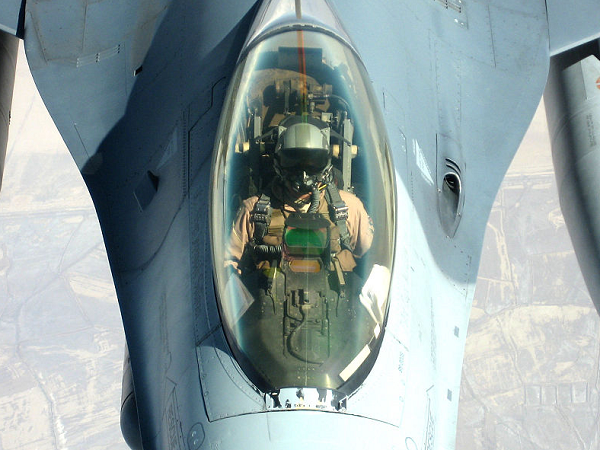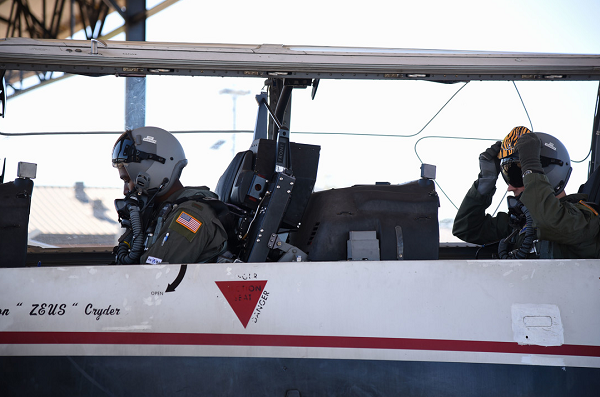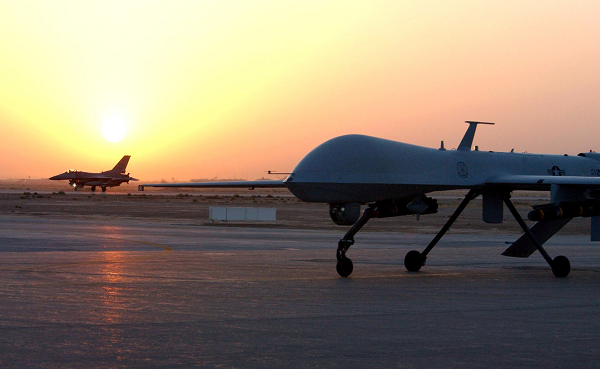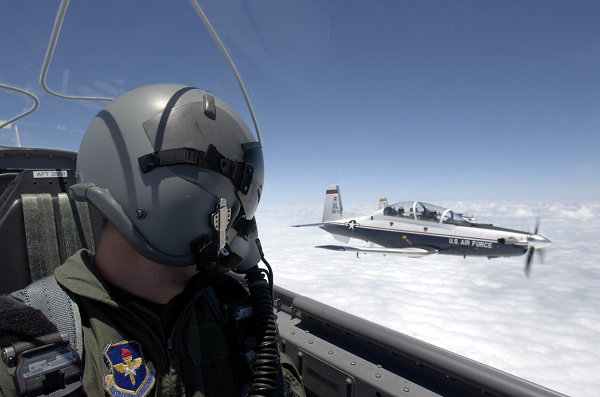Becoming a pilot in the United States Air Force is not an easy task.
The Air Force Pilot Requirements can be difficult to meet, which is why such a small percentage of the population even qualifies for this unique job.
There are lengthy requirements just to enter into the program and an advanced training course that only the truly dedicated will complete.
For those who are considering a career as an Air Force pilot, you may be lost on all of the requirements and training that are required.
Below you will find a list of all basic requirements, advanced requirements and qualifications, and an outline of what Air Force pilot training is like.
Related Article – Air Force Flight Engineer (1A1X1): Career Details
Jump To A Section
Basic Requirements for Pilots

Age: Applicants must pass a selection board prior to the age of 33.
Height: Candidates must be 64 to 77 inches tall when standing and 34 to 40 inches when sitting.
Height specifications vary for each aircraft. The Air Force encourages individuals of all heights to apply. Those who are taller or shorter than average may have to go through special screening to ensure the aircraft can be safely operated.
Weight: Pilot weight standards are the same for men and women. They follow a chart that bases your weight on your height. For individuals who will pilot aircraft with ejection seats, they cannot weigh less than 103 lbs. and no more than 240 lbs. for a T-38 aircraft and 245 lbs. for all other ejection seat aircraft.
Related Article – Air Force Height and Weight Requirements
Education: Applicants must have or be within 365 days of receiving a baccalaureate degree (BA or BS) in any major. They also must have a minimum 2.5 GPA.
Vision: Pilots are required to have normal color vision. Uncorrected distant vision cannot exceed 20/200. Uncorrected near vision cannot exceed 20/40. Both must be corrected to 20/20 or better. Having corrective eye surgery could be a disqualifying factor.
Citizenship: Officers in the Air Force are required to be native-born or naturalized United States citizens.
Advanced Requirements and Qualifications
ASVAB: Standard ASVAB score to enter into the Air Force for high school graduates is a 31. Officers are not required to take the ASVAB. They take the Air Force Officer Qualifying Test, (AFOQT).
AFOQT: The AFOQT is similar to the SAT or ACT. It can take roughly five hours to administer and contains approximately 550 test items in 12 areas. It is required to become a pilot and is a component of the Pilot Candidate Selection Method Score.
Scores are a percentile from one to 99. Pilots must score a 25 in pilot, 10 in navigator, and a 50 in a combined pilot-navigator score.
Medical Requirements: Applicants cannot have a history of hay fever, allergies, or asthma after age 12.
Pilots are required to have a Flying Class I Physical in order to enter into the Medical Flight Screening (MFS) Program.
For rated officers, there are additional Flying Class medical requirements that must be met after passing MFS. The type of class will depend on the aircraft and job performed.
Flying Class I Physicals consist of color vision testing and depth perception testing. Applicants must give in-depth verified medical background information (previous injuries or illnesses can be disqualifying), eye examinations, dental examinations, neuropsychiatric screening, and more.
Also, medication and over-the-counter medication use is prohibited for pilots unless approved by the Air Force.
Related Article: Air Force Ranks And Pay
Single Scope Background Investigation: Pilots are required to pass a Single Scope Background Investigation (SSBI).
An SSBI includes completing a document submission of Form 86, documentation verifying date/place of birth, citizenship, and employment.
SSBI includes different checks including financial reviews, local agency checks, national agency checks, and public record checks.
Interviews are also performed with at least four references, neighborhood residents, subject interviews (applicant), and sometimes a polygraph.
Education: Applicants must complete either Officer Training School (OTS), Air Force Academy (AFA) or Air Force Reserve Officer Training Corps (AFROTC).
OTS- Officer Training School is a 9.5-week course. It trains individuals in leadership roles. The school is located at Maxwell Air Force Base in Montgomery, AL.
AFA- The US Air Force Academy is highly selective, and it can be difficult to be accepted. Located in Colorado Springs, CO., the AFA is a four-year program that is open to high school graduates who meet strict criteria.
AFROTC- The Air Force ROTC is an opportunity for those to enter into the Reserve component of the Air Force and receive tuition assistance while earning a degree.
Related Article – Air Force Aircraft Loadmaster: Career Details
What Happens If You’re Selected For Air Force Pilot Training?
After completing all entry testing and requirements plus completing the minimum education requirements to become an officer, you may be selected to complete Air Force Pilot Training.
Find out what is next, below.
1. Initial Flight Screening
The first stage to becoming an Air Force pilot is to complete Initial Flight Screening (IFS) at Pueblo, Colorado.
This training facility is similar to an Air Force base with classrooms, maintenance hangars, dormitory-style rooms. dining facilities, and more.
This introductory course is used as a screen and prepares candidates for what it is like in advanced programs.
Upon entering into IFS, pilots are tested physically to ensure they can withstand G-force from jets.
The course is roughly six weeks and teaches those with and without flight time.
It teaches everything from terms that flyers use, to how to physically fly the aircraft.
During Initial Flight Screening, pilots will train on a DA-20 low-wing aircraft with a maximum altitude of 13,120 feet.
Graduating requires individuals to complete 19 sorties and 25 hours of flight time, which must include two solo flights.
2. ENJJPT or SUPT

After successfully completing Initial Flight Screening, pilots will go to Euro-NATO Joint Jet Pilot Training (ENJJPT) or Specialized Undergraduate Pilot Training (SUPT or UPT).
ENJJPT is at Sheppard Air Force Base in Texas.
This course is taught by US Air Force officers in addition to officers from other NATO ally Air Forces.
It is designated for those who wish to become fighter pilots.
Initially, pilots train on a T-6 Texan II and then they move on to a T-38 Talon.
Pilots learn skills on contact, instruments, and low-level and formation flying and generally are required to complete about 125 hours of flight time.
SUPT is completed at Laughlin AFB, Texas, Vance AFB, Oklahoma, or Columbus AFB, Mississippi.
This specialized training is broken into three phases.
Phase 1: Academic/Ground Training
During this phase of training, individuals will learn the basic principles and techniques to operate advanced aircraft.
Ground training will be given to supplement and grow flying skills.
This phase also includes learning officer-related functions such as leadership skills, qualities for officers, and the role of a pilot as an officer.
Related Article – Air Force Bases In Florida
Phase 2: Primary Flying Training
The Primary Flying Training is similar to what it sounds like.
This training consist of primary flying skills such as basic flying fundamentals.
It lays the groundwork for the next phase of training.
Phase two also focuses on responsibilities that military officers and leaders have.
Phase 3: Advanced Flying Training
Based on class standings and needs of the Air Force, individuals are assigned to different tracks.
Those who are airlift and tanker pilot prospects are assigned to airlift/tanker track.
These individuals train in the T-1 Jayhawk and train at either Columbus, Laughlin, or Vance AFB.
Prospective bomber or fighter pilots are assigned to a bomber/fighter track.
They train in the T-38 and train at Columbus, Laughlin or Vance AFB.
Any helicopter prospects train in the TH-1H and complete their training at Fort Rucker.
Students who are selected for flying Remotely Piloted Aircraft will train at JBSA-Randolph on a T-6 Fixed Training Device.
Related Article: Air Force Tattoo Policy
What Happens After Training
After completing SUPT, individuals will continue training on specific aircraft.
The aircraft that you train on depends on needs of the Air Force and your class standing along with previous training results.
Students will compete for the aircraft they wish to pilot based on the training they have been receiving.
The location that you go to depends on the type of aircraft,
Locations and assigned aircraft:
- Kingsley Field, OR- F-15 Eagle,
- Luke AFB, AZ- F-16 Fighting Falcon
- JBSA-Lackland, TX- F-16 Fighting Falcon
- Altus AFB, OK- KC-135 Stratotanker, C-17 Globemaster III,
- Little Rock AFB, AR- C-130
- Kirtland AFB, NM- MC-130H Combat Talon II, MC-130J Commando II, MC-130P Combat Shadow, HC-130 Combat King, UH-1N Huey, HH-60 Pave Hawk helicopter, CV-22 Osprey tilt-rotor
After mastering their specific aircraft, pilots are not finished with training yet.
There are various schools and training classes that pilots must go through to ensure they are prepared for all possible scenarios.
Training includes Survival, Evasion, Resistance and Escape (SERE) training.
SERE training has multiple courses and pilots will attend a SERE course to learn how to survive on land and another SERE course on how to survive in water.
Related Article – Air Force SERE Specialist (1T0X1): Career Profile
Conclusion

Becoming an Air Force pilot is an accomplishment that leads to a long career with the Air Force and many civilian career opportunities.
The Air Force pilot requirements include entry testing, physical tests, education requirements, flight training, and survival training.
Air Force pilot requirements are there to ensure only the best become an officer and fly aircraft to defend the US.
Becoming fully trained and capable of responding to any scenario is what makes aircraft pilots succeed.
All requirements and training discussed above provide more information and a layout for those who wish to enter into the Air Force.
Related Article: High School To Flight School
References
AF Pilot Medical Examination Standards
- Replacing Dog Tags: 6 Things You Need to Know - June 28, 2024
- Navy OAR Test Study Guide - June 24, 2024
- 10 Best Sniper Movies of all Time - June 20, 2024
Originally posted on December 23, 2019 @ 6:07 am
Affiliate Disclosure: This post may contain affiliate links. If you click and purchase, I may receive a small commission at no extra cost to you. I only recommend products I have personally vetted. Learn more.
